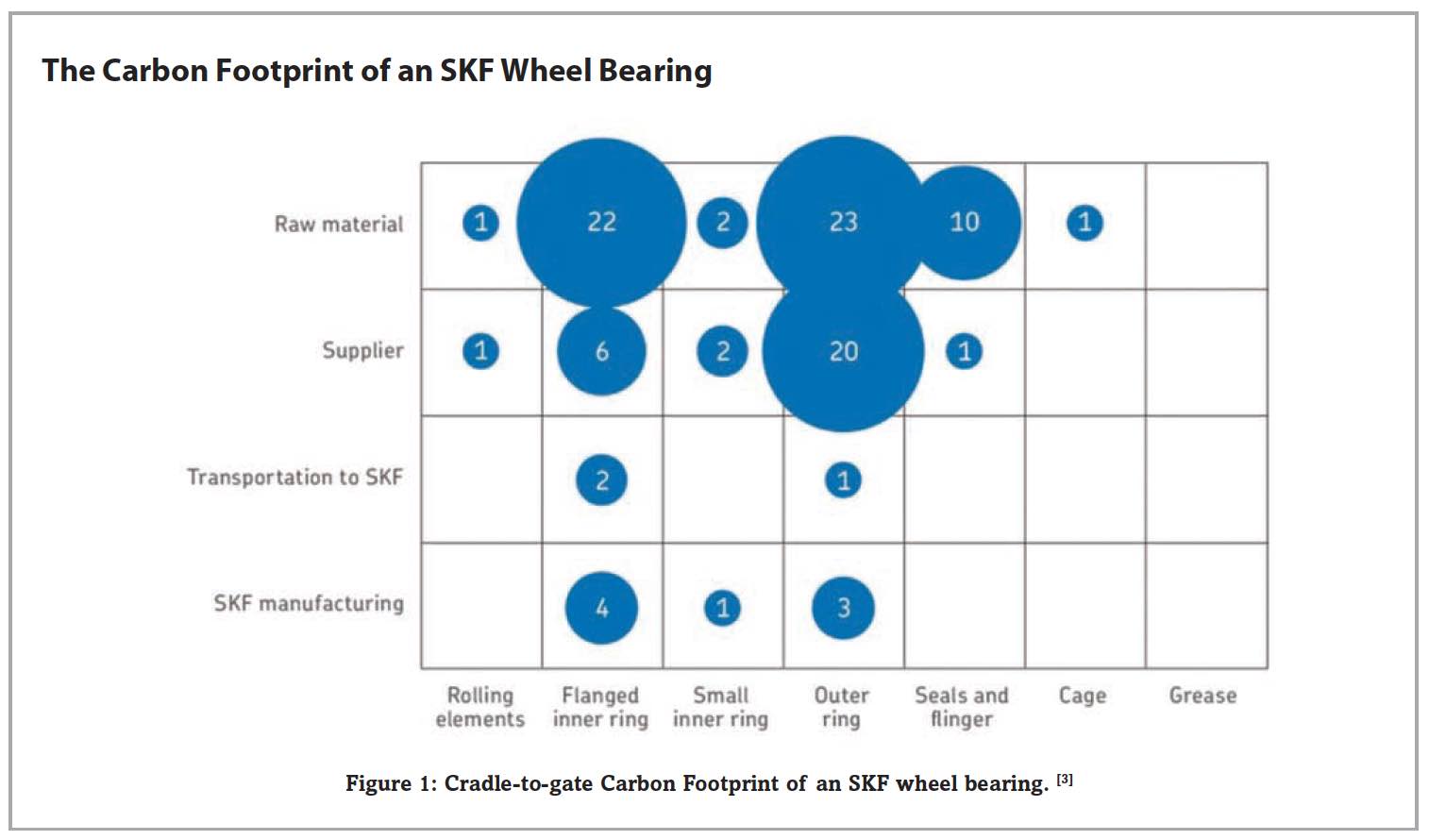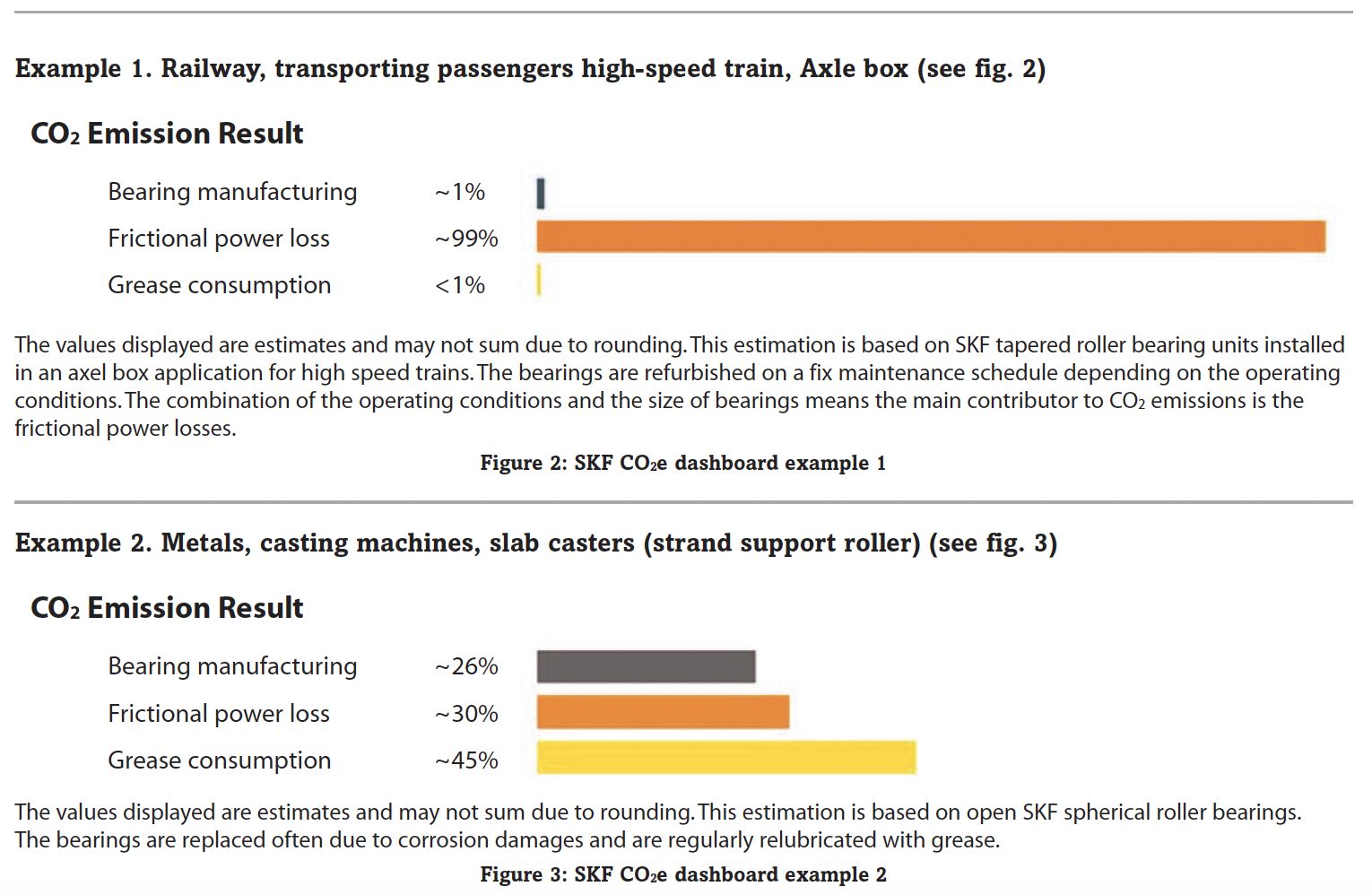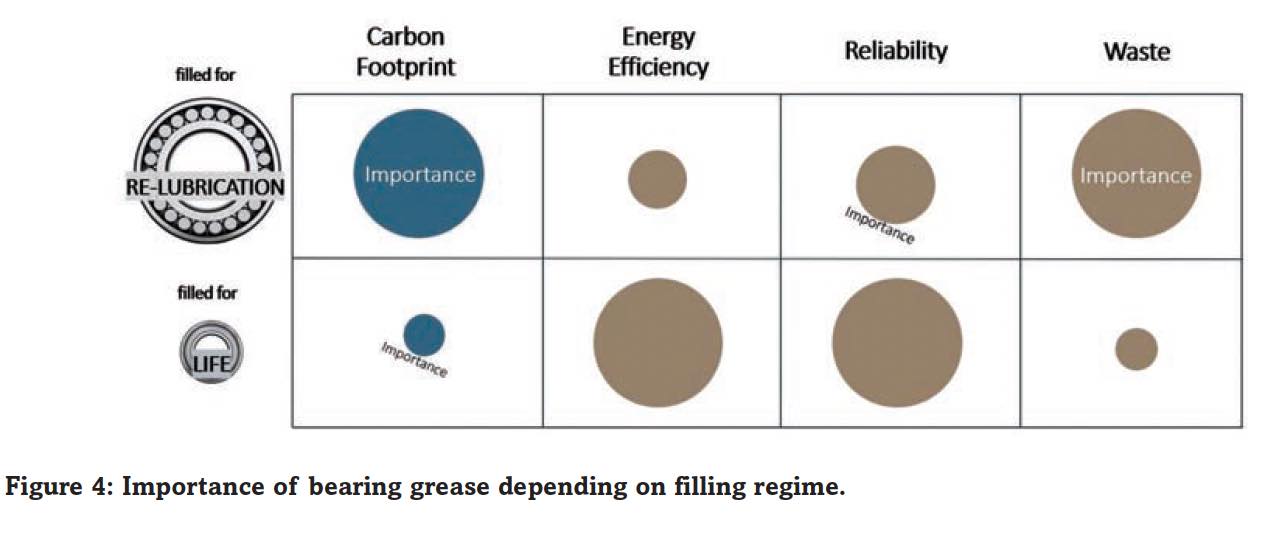Afton Chemical Corporation
Sustainability and Grease Lubrication in Rolling Bearings
Introduction by by Alyson Wilson, Marketing Manager-Industrial, Afton Chemical Corporation, www.aftonchemical.com | TLT CMF Plus November 2023
Article by Frank Berensa and Piet Lugtb,c
aSKF Technology Centers of Expertise, St. Cyr-sur-Loire, France
bSKF Research and Technology Development, Houten, The Netherlands
cUniversity of Twente, Enschede, The Netherlands
Introduction
In the article, Afton Chemical’s Key Driver Seminar guest speakers from SKF discuss how environmental sustainability is important for many companies focusing on their respective CCF (Corporate carbon footprint). SKF has developed a tool for exploring emissions related to the production and use of bearings. It shows the impact of grease lubrication of rolling bearings related to CO2 equivalent (CO2e) emissions.
The grease carbon footprint for factory-fill greases is negligible, while it is the main part of the overall CO2e emissions with relubrication. Grease selection should be based on energy efficiency, reliability, or waste. Standardized and simple test methods or international agreements are currently lacking in the ability to choose a grease based on sustainability concerns.
Background
Over 80% of all product-related environmental impacts are determined during the design phase of a product[1]. Therefore, choosing the right product is vital for influencing the impact on sustainability.
By far, most rolling bearings (80-90%[2]) are grease lubricated. Grease use in bearings can be generally divided into two filling regimes: greased for life and greased for relubrication.
Grease selection criteria depend on the application conditions. Many standardized and well-known test methods are used to define the lubricant’s properties, but standards and criteria for sustainability are lacking.
Carbon Footprint Examples
Often, grease has a small contribution to the carbon footprint compared to other components in the bearing. Figure 1 illustrates the example of an SKF wheel bearing where the grease part is less than 1% of the carbon footprint assessing scope 1, 2, and 3 upstream.

To better understand and specifically show the impact of a bearing in the use phase, SKF has developed a CO2e estimator for exploring how emissions related to the production and use of bearings are distributed for different industry applications, visualized on a dashboard [4].
The emissions related to rolling bearings in an application are estimated by considering three main categories: bearing production, including potential replacements; frictional power losses, including seal frictional losses; and grease consumption during the operational lifetime of the bearing. The estimate is based on the EU-31 average conversion factor (source: Greenhouse Gas Protocol).
Looking only from a grease perspective, the grease manufacturing carbon footprint is very important for relubricated bearings, while in greased-for-life bearings, it is significantly less important.
Frictional power loss/energy efficiency is by far the main CO2e emission in many greased-for-life applications. One should aim for a low-friction product to significantly reduce the overall CO2e emission.
The examples are presented below.

The first example is a greased-for-life application, showing that frictional power loss is by far the most important contributor to CO2e emission over the service life of the bearing in this application.
In the second example, the bearings in the application are re-lubricated, showing now that the grease itself contributes significantly to the carbon footprint in the application.
Importance of Parameters
Depending on the filling regime (greased for life or relubrication), the importance of grease-related parameters can be different (see fig. 4).

Reliability in relation to grease lubrication is – next to fulfilling the application requirements – mainly grease life. As relubrication intervals of a given grease are shorter than the related grease life, a prolonged relubrication interval due to higher performance will nevertheless also decrease the amount of grease used in the application.
The waste is approximately proportional to the amount of grease used over the running time of the application.
Situation of Parameters
The choice of the grease itself is determined in the design phase of the application. This selection is usually based on the results of standardized tests (ASTM, DIN, ISO etc.).
Unfortunately, such tests are not yet available to support a sound decision on which grease to use when focusing on overall grease sustainability factors.
Grease Carbon Footprint: There are ongoing discussions in different organizations to have an agreed method of calculating carbon footprint, e.g., in the ELGI Sustainability Technical Consortium.
Grease Friction (Factor): Even though there are some friction models to calculate bearing friction, there is no standardized test method for this. A clear advantage for the right and fast decision on friction would be the availability of a grease-specific friction factor based on a “simple” standardized test method. Ideas might be drawn from the “Worldwide Harmonised Light Vehicle Test Procedure (WLTP)” [5], which has a test cycle duration of only 30 minutes.
Grease Life (Factor): The grease life factor has been reported and proposed in 2022[6] for greases used in ball bearings. When testing a grease under a given condition, the effect of temperature, speed, axial load, and grease filling is included for calculating a single grease life factor (GLF). This greatly simplifies the choice of a grease based on its grease life performance. The method is independent of the selected test method/rig and can, therefore, be used throughout the industry.
Waste: The amount of grease used in the application is approximately proportional to the waste amount. Recycling or reconditioning of oil is well established; however, similar activities for industrial greases are unknown to the author.
Conclusions
• Carbon footprint for grease, as well as waste, is more important for relubricated bearings. Energy power loss and grease-related reliability are more important for greased-for-life bearings.
• The importance of each sustainability parameter depends on the application and if the bearing is greased for life or relubricated.
• The current baseline needs to be known and understood with its importance and impact for being able to potentially reduce environmental impact.
• Unfortunately, no standardized calculation or testing procedure exists for the described parameters. Some are under development or proposed (e.g., Grease carbon footprint or Grease Life Factor (GLF), while others do not exist (e.g., Grease friction factor).
• Commonly accepted simple methods (like the GLF) and calculation agreements (like carbon footprint calculation recipe) are needed for all main sustainability influencing factors to support decisions on grease use in applications.
• The GLF concept makes it possible to use the results from most test rigs in grease specifications.
• The GLF determines reliability and long life and should, therefore, always be part of grease specifications.
The author thanks SKF for the permission to publish this paper.
References
[1] Click here. March 2023.
[2] P. M. Lugt. Grease Lubrication in Rolling Bearings. John Wiley & Sons, Ltd., The Atrium, Southern Gate, Chichester, West Sussex, PO19 8SQ, United Kingdom,
first edition, 2013.
[3] Click here. March 2023.
[4] Click here. March 2023.
[5] Click here. March 2023.
[6] P. M. Lugt and F. Berens. The grease life factor concept for rolling bearings. Tribology International, 169:107460, 2022.